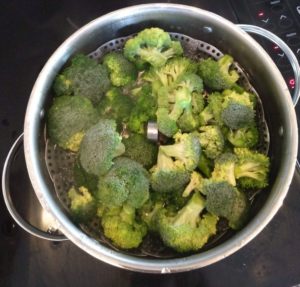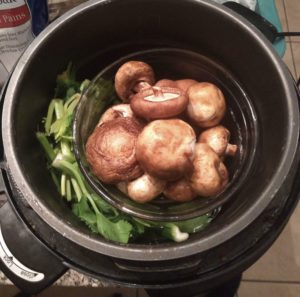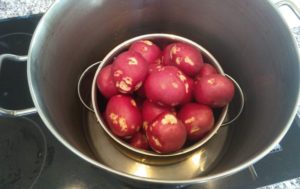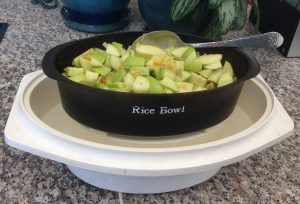I was given a steam cooker by my father’s elderly friend maybe 10 years ago. At first I didn’t know what to do with it, but then I realized it’d be useful to implement Edgar Cayce’s cooking instructions.
Cayce frequently told people that foods that need cooking should be cooked in their own juices, and frequently recommended using patapar paper for this purpose:
6. Noons – not too much should be taken at this meal, and that only of vegetable juices. And the preferable way to prepare such juices would be through cooking the vegetables after tying them in Patapar paper; not putting them in water to boil, but cooking either in the Patapar paper or in a steam steamer, so that only the juices from the vegetables may be obtained – and no water added in the cooking at all. Then these juices should be combined and seasoned to the taste. This activity will build into the system the proper associations with that which has been indicated by the corrections in the spine, and make for the corrections in the activities throughout the digestive system.
Evenings – (these foods only added gradually, after the eight to ten day period) – a little chicken or mutton broth, but very little of the meat itself. A little later the body may begin with stewed chicken, or broiled chicken or broiled fish, and well-cooked vegetables – but not with too much grease in same. Even these vegetables and the chicken or fish would be better cooked in the Patapar paper or a steam cooker.
Edgar Cayce Reading #133-4, F 54, July 28th, 1934
In the early 1900’s patapar paper was the best way to implement the guidance that “no water [be] added in the cooking at all”, as most people could be expected to have simple pots and pans. By 1934 food preparation technology had advanced considerably. Mr. Cayce was able to expand his guidance to include newer steam cookers (above) and pressure cookers:
(Q) Does steam pressure cooking at 15 lb. temperature destroy food value in foods?
Edgar Cayce Reading #340-31, F 47, June 21st 1935
(A) No. Depends upon the preparation of same, the age, and how long gathered. All of these have their factors in the food values. As it is so well advertised that coffee loses its value in fifteen to twenty to twenty-five days after being roasted, so do foods or vegetables lose their food value after being gathered – in the same proportion in hours as coffee would in days
(Q) Consider also the steam pressure for cooking foods quickly. Would it be recommended and does it destroy any of the precious vitamins of the vegetables and fruits?
Edgar Cayce Reading #462-14, M 57, January 6th, 1942
(A) Rather preserves than destroys.
I use steam cookers and pressure cookers to prepare many of my foods. These electric appliances are commonly found at thrift stores and garage sales for just a few dollars.
When potatoes and other vegetables are boiled, the a lot of the valuable minerals escape into the water. Many people don’t realize this, and tragically throw away the most important part of their food:

I frequently use my pressure cooker as a double-boiler:

I recently prepared a potato salad recipe (using vinegar and olive oil, not mayonnaise!), and needed more potatoes than would fit my my pressure cooker. This pot-in-a-pot method worked fantastically well:

By steaming and double-boiling my potatoes and other vegetables, I get the most out of the vegetables I’ve grown and purchased.
